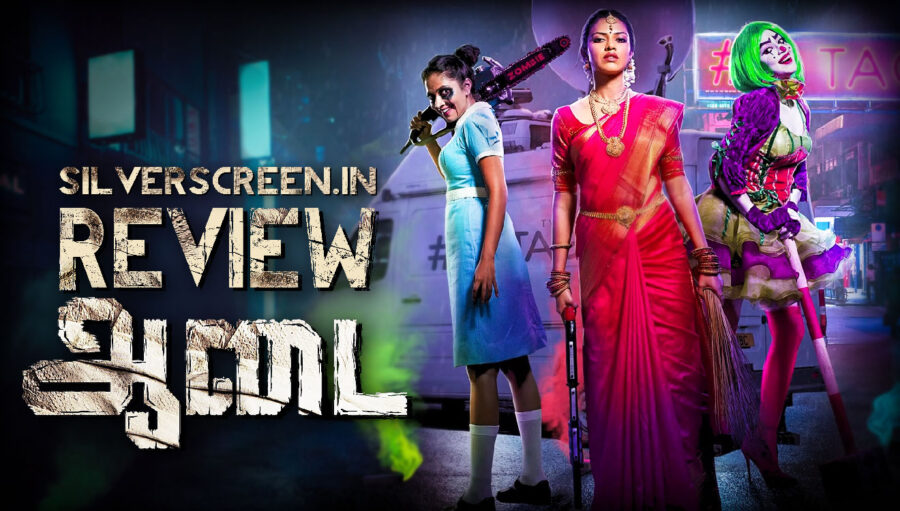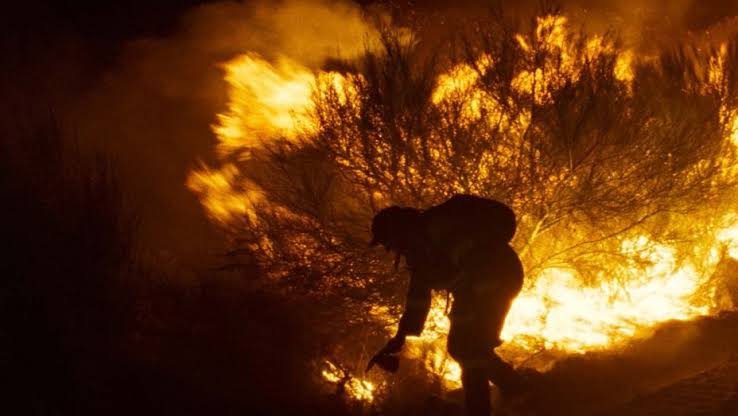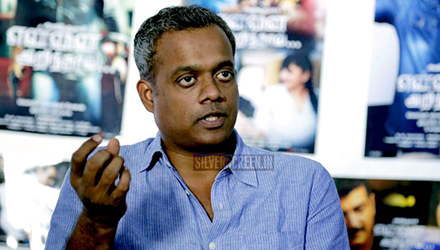Director: Rathnakumar
Cast: Amala Paul, Ramya Subramanina, Sriranjini, Vivek Prasanna
Rathna Kumar’s Aadai, starring Amala Paul, begins with a history lesson. It tells the story of Nangeli, an Ezhava woman in Kerala who protested against the “Breast Tax” imposed by the land-owning Brahmin king. Nangeli claimed her right to dress however she wanted and also refused to pay the tax. When she was harassed for her dissent, she cut off her breasts and died due to blood loss. This is a fascinating premise to begin Aadai with, not just because of its unfortunately timeless politics of caste and oppression of women, but also the fact that cutting off of one’s breasts is a recurring motif in South Indian literature, specifically Tamil literature. Nangeli is from Kerala but Kannagi, in furious protest, cuts off her left breast and flings it over the city of Madurai. In ‘Nachiyar Tirumozhi’, Andal too writes about plucking off her breasts after growing frustrated with Govardhana. Aadai begins with the promise of taking on Brahminical patriarchy, inspired from the myths of Kannagi to the very real story of Nangeli that began as an early effort to annihilate caste.
Cut to present, Kamini (Amala Paul) is an unapologetic TV host who has upped the TRPs of her channel by introducing a prank program. The pranks seem less fun and more cruel, an opinion that is not lost on the director and the people around Kamini. The early portions of Aadai can seem performative, trying to establish just how no holds barred Kamini can be – she is fiercely independent, drives a bike, doesn’t care about others’ feelings. While on one hand it’s all a little cliched “feminist woman” iconography of Tamil cinema, on the other it is refreshing to see a principal woman character not painted as a saint. Even if the events can be contrived, the filming isn’t, so it never comes across as artificial – you can buy into the existence of not just Kamini but also her colleagues and friends at the TV channel played by Vivek Prasanna and Ramya among others. There is a drug-addled sequence filmed with a lot of colour and commotion, even an image from 2001: A Space Odyssey making it to the list, the morning after which Kamini’s nightmares begin.
It’s a curious juxtaposition. In an early scene, Kamini is jolted up by a dream that she thinks is a nightmare. She is clad in saree and jewels, praying in a temple and lighting a lamp. It is potent and offensive enough for her to take refuge in reality, far more desirable than what she saw in the dream. But her nightmare comes in another form – once again she’s jolted up into feverish reality and at once hopes that it all be just a dream. Aadai is then like Vikramaditya Motwane’s Trapped but with a naked woman in an abandoned building. The metaphor hunters can go to town with this. Every objectifying, patriarchal pithy is applicable. A man noticing something is afoot goes up the building and one can only imagine what’s on his mind – his ringtone suggests a different interpretation of a famous song, a handful of irony. Rathna Kumar films these sequences with a distant sensitivity, the camera is admirably dispassionate and never intruding. Only the men in the film are. A moment unfolds through the iron pipe that Kamini holds as a weapon. Lights come on in a race to catch up with fleeing Kamini, as if the woman is forced to do the impossible – run faster than the quickest thing in nature.
Amala Paul is a blazing presence and she gets the full spectrum – she gets to play the unrepentant Kamini, the vulnerable Kamini and everything in between. Aadai bundles up a lot of themes together and struggles to unpack them in any coherent manner. There is a scene where Kamini tries to reach a woman in a service provider’s customer care, but the woman grows irritable and shuts her off. The employee’s colleague asks her why she didn’t listen, after all this is a woman and we hear enough stories to be concerned. The film spectacularly comes off the rails in the closing portions – introducing a flashback and a misplaced rant against social media. It stops being a film and becomes a lecture, not even something that was scheduled. It is against Facebook, Twitter (a weird form of tweetup is happening outside the building. Who does mass tweetups in 2019?) and poor old Tik Tok. There is a mild hint of body shaming in the way a policeman and his family are shown, and an ill-advised joke on Radha Ravi (though one could argue that the existence of the men making the joke rings true).
Recommended
However, there are delightful potshots on centrists and an open reference to the sexual harassment charges against Vairamuthu in the form of a lyricist in the film. Is this the first reference in cinema? It’s welcome because if the pro-establishment media won’t get you, Tamil pop culture always will, mainstreaming it in the process. Somewhere in all, this is a genuine effort to say something about different forms of feminism – savarna and intersectional. Kamini’s struggle for survival is then equated to that of countless other women, just not as privileged. The problem is when Aadai loses its remorseless nature and pins blame on Kamini, and paints warnings about using freedom appropriately. The film becomes a confused mixed bag. It’s just not unapologetic enough.
*****
The Aadai review is a Silverscreen original article. It was not paid for or commissioned by anyone associated with the film. Silverscreen.in and its writers do not have any commercial relationship with movies that are reviewed on the site.


